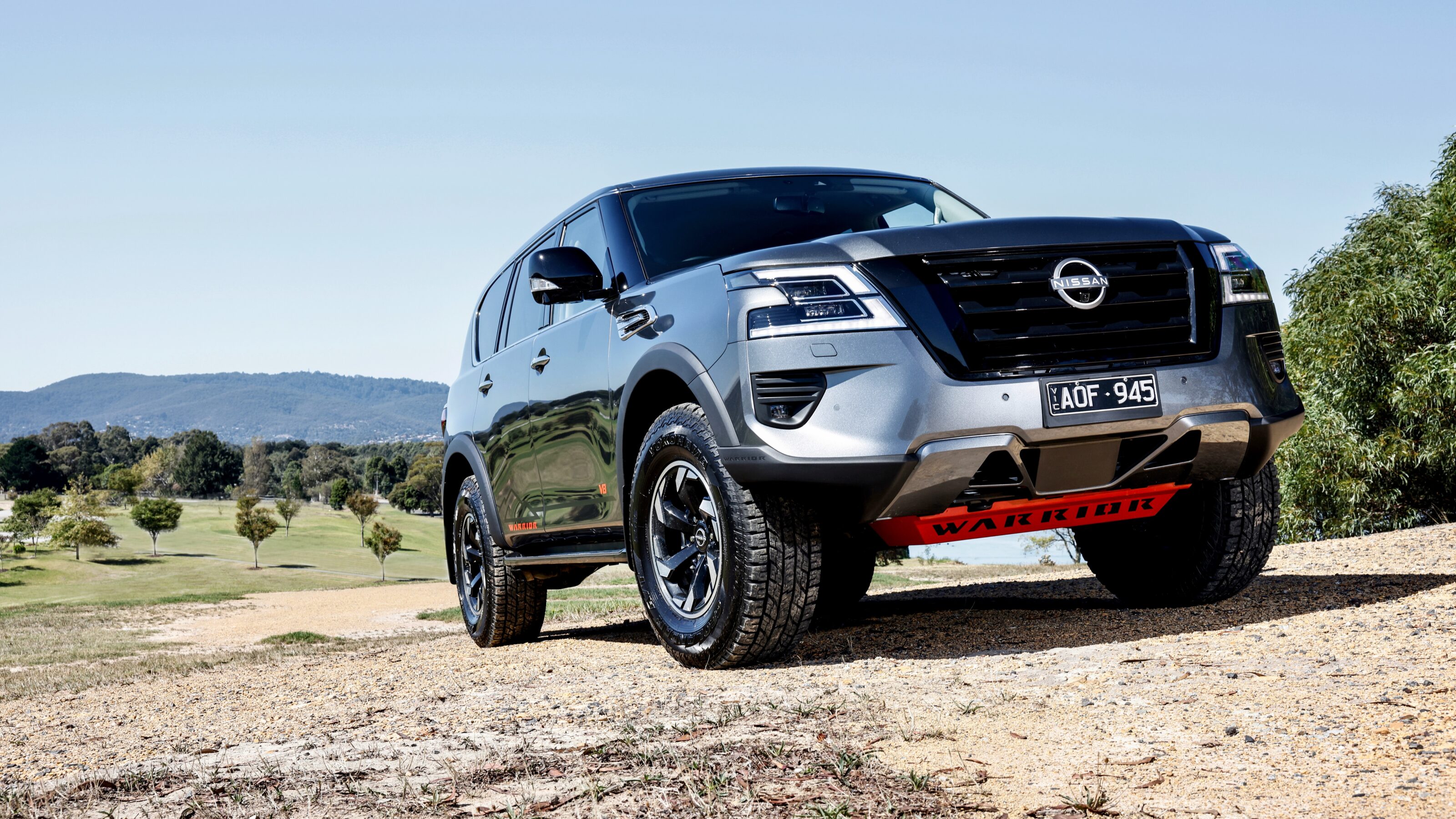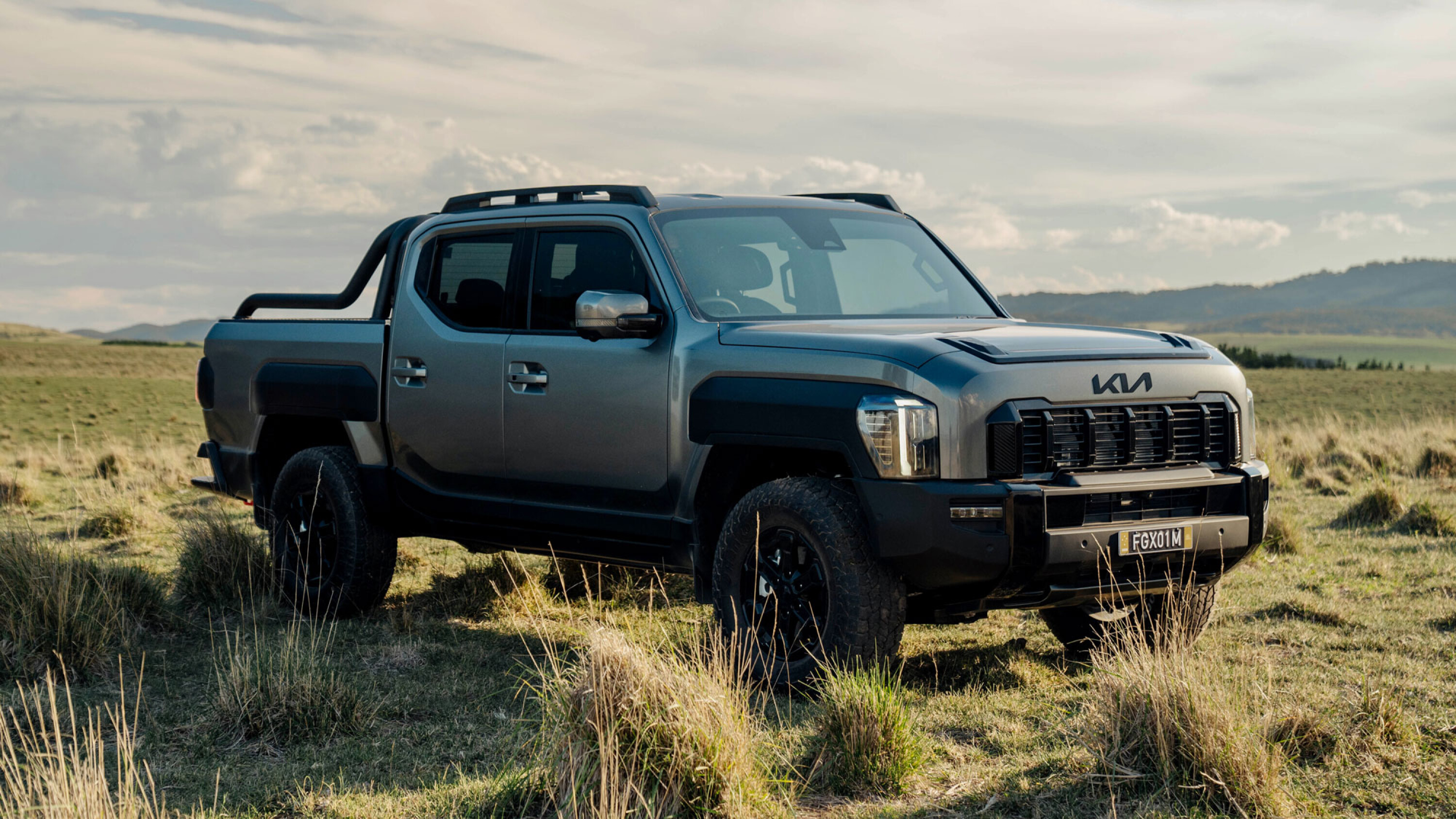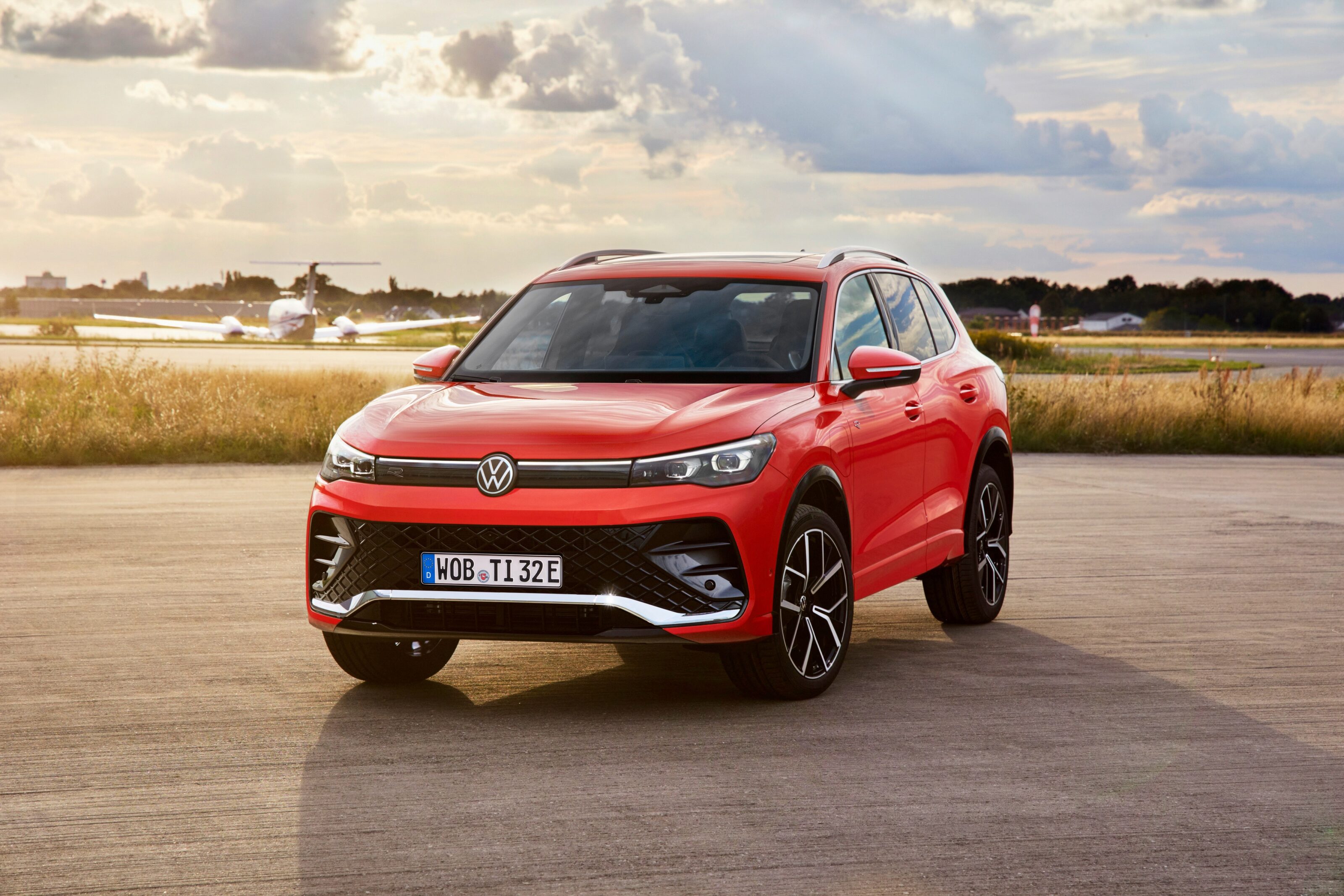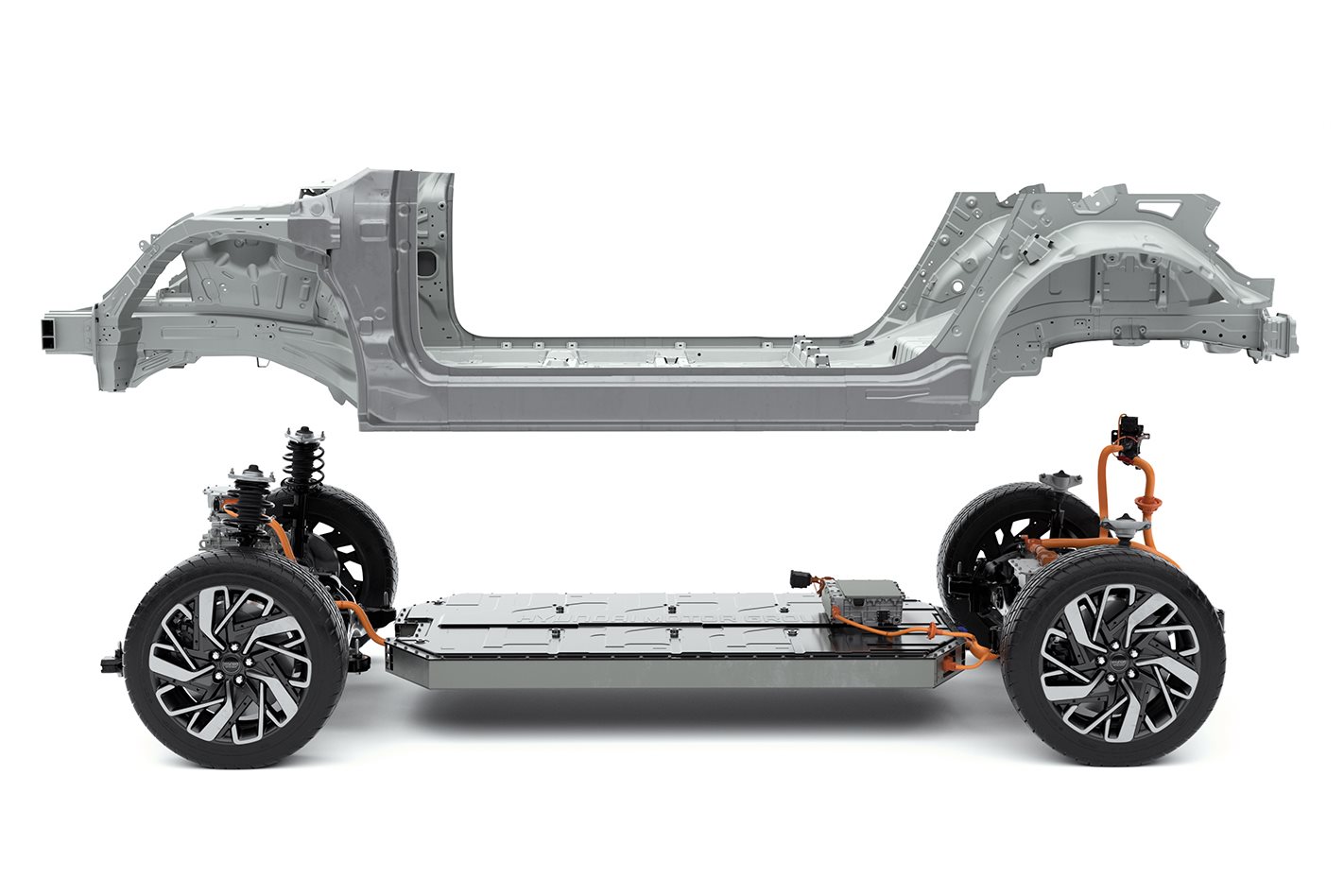
Hyundai Motor Group has unveiled its dedicated Battery Electric Vehicle (BEV) platform that will underpin 23 new Hyundai and Kia EVs scheduled to be introduced by 2025.
Dubbed the ‘Electric-Global Modular Platform’ (E-GMP), the new architecture will serve as the core technology for Hyundai Motor Group’s next-generation BEV line-up, marking the biggest commitment to electrified vehicles from the South Korean company to date.
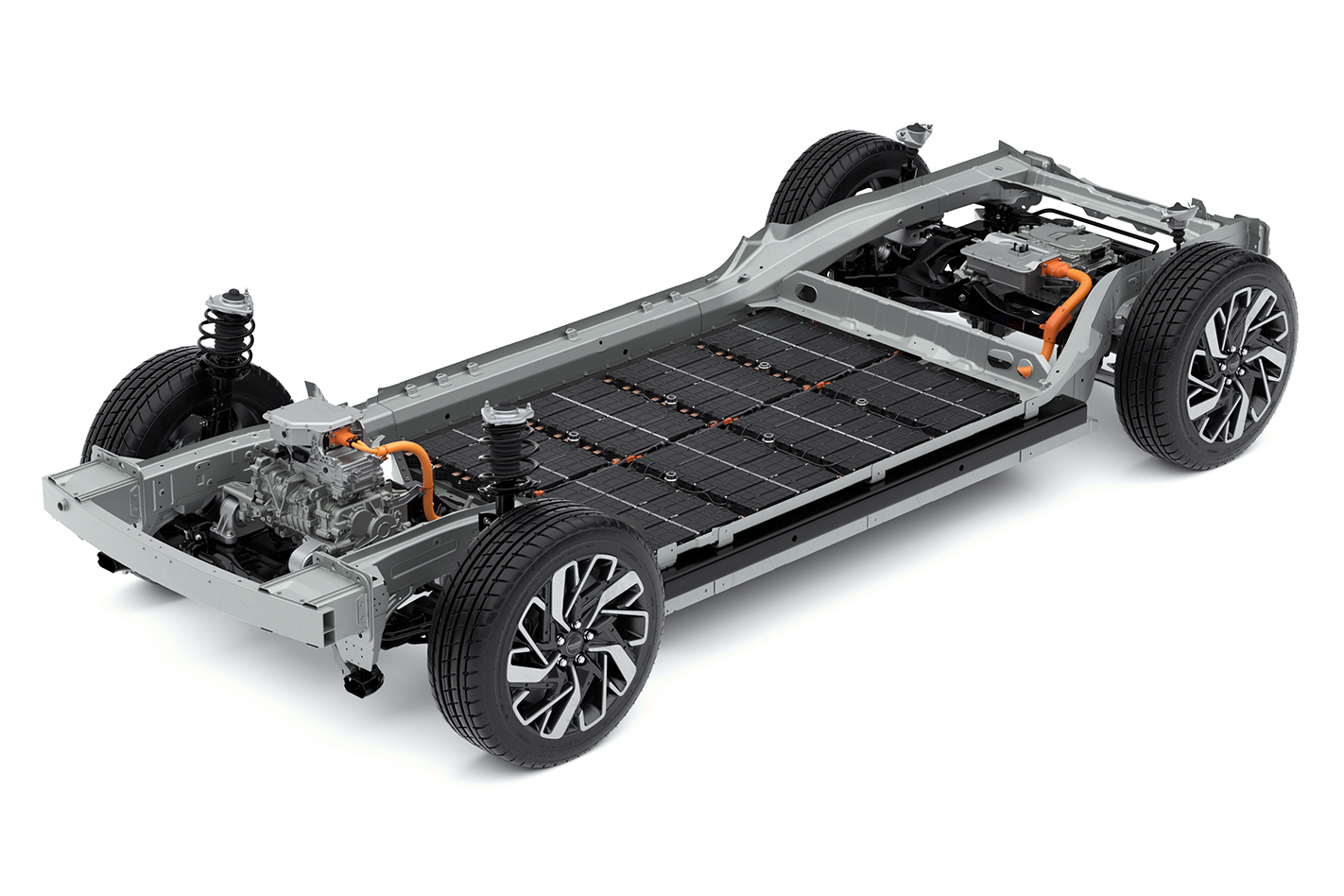
It will be complemented by an all-new electrification system offering 500km range, bi-directional charging, and 800v multi-charging that promises 100km worth of range in five minutes at the plug.
With a dedicated ground-up design for BEV’s, E-GMP provides various advantages compared with the Group’s existing internal combustion-engine platforms, including increased development flexibility, higher performance, longer driving range, enhanced safety features, and more interior space for occupants and luggage.
“Today our front-wheel driven Hyundai and Kia BEVs are already among the most efficient ones in their segments,” said Albert Biermann, President and Head of R&D Division for Hyundai Motor Group.
“With our rear-wheel driven based E-GMP, we are extending our technological leadership into segments where customers demand excellent driving dynamics and outstanding efficiency.”
With a standard BEV platform in its ranks, Hyundai will also reduce complexity through modularisation and standardisation, allowing rapid and flexible development of products, which can be used across most vehicle segments, such as sedans, crossovers and SUVs including large seven-seaters.
Performance
E-GMP will also underpin rear-wheel-drive sports BEVs capable of accelerating from zero to 100km/h in less than 3.5 seconds and hitting a maximum speed of 260km/h, says its maker.
Hyundai claims E-GMP will also offer improved cornering performance and driving stability at high speed, with the low-mounted battery back creating a low centre of gravity resulting in ‘optimal weight distribution’ between front and rear axles.
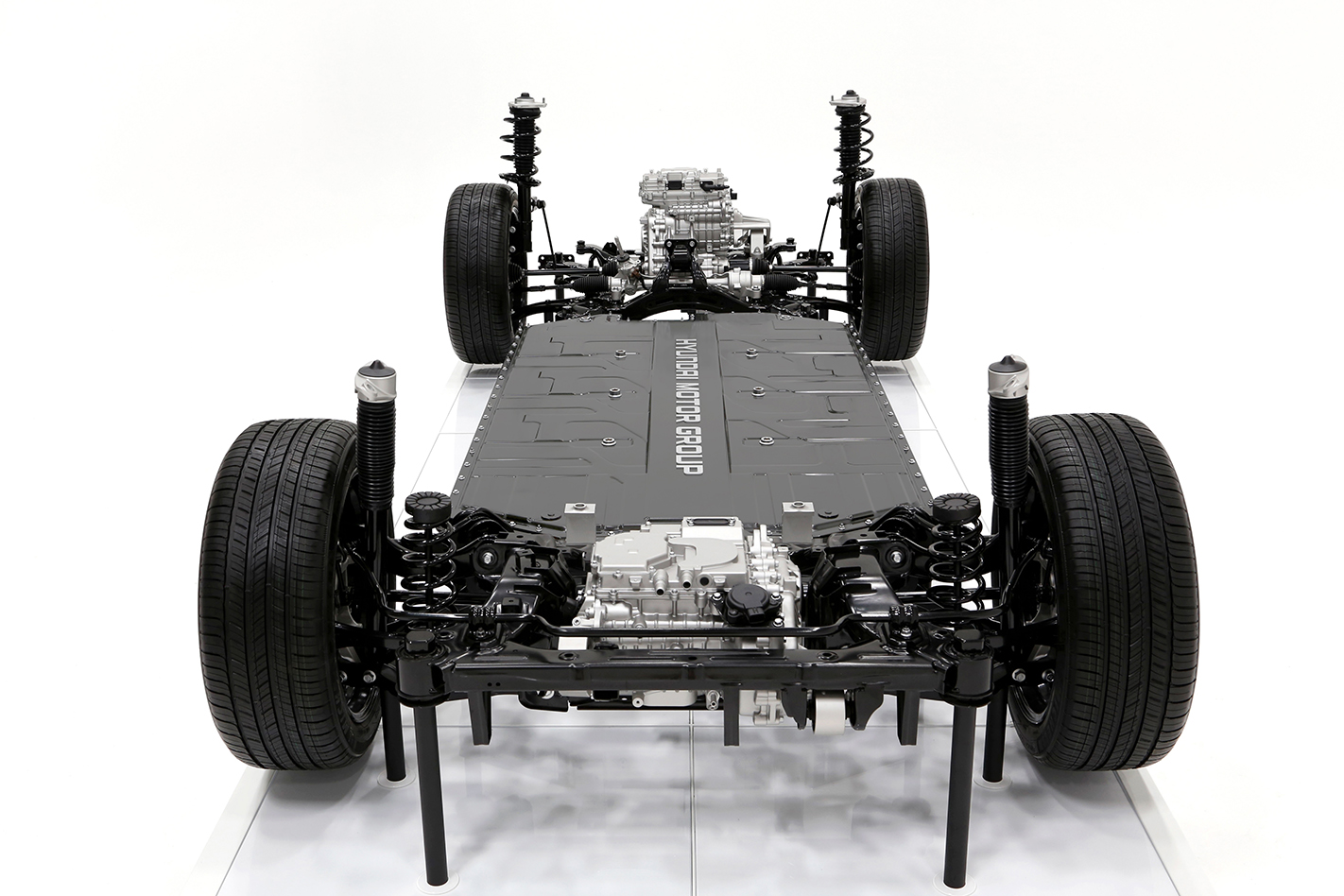
It is designed primarily for rear-wheel-drive for enhanced driver engagement, however, customers will be able to choose all-wheel drive with an additional motor which can switch between two-wheel and all-wheel drive modes to enhance efficiency by offering the ideal level of power or performance according to the driving conditions.
It will also feature a standard five-link rear suspension system, which is typically used for medium and large vehicle segments, and the world’s first integrated drive axle (IDA), which combines wheel bearings with the driveshaft for a more compact method of sending power to the wheels.
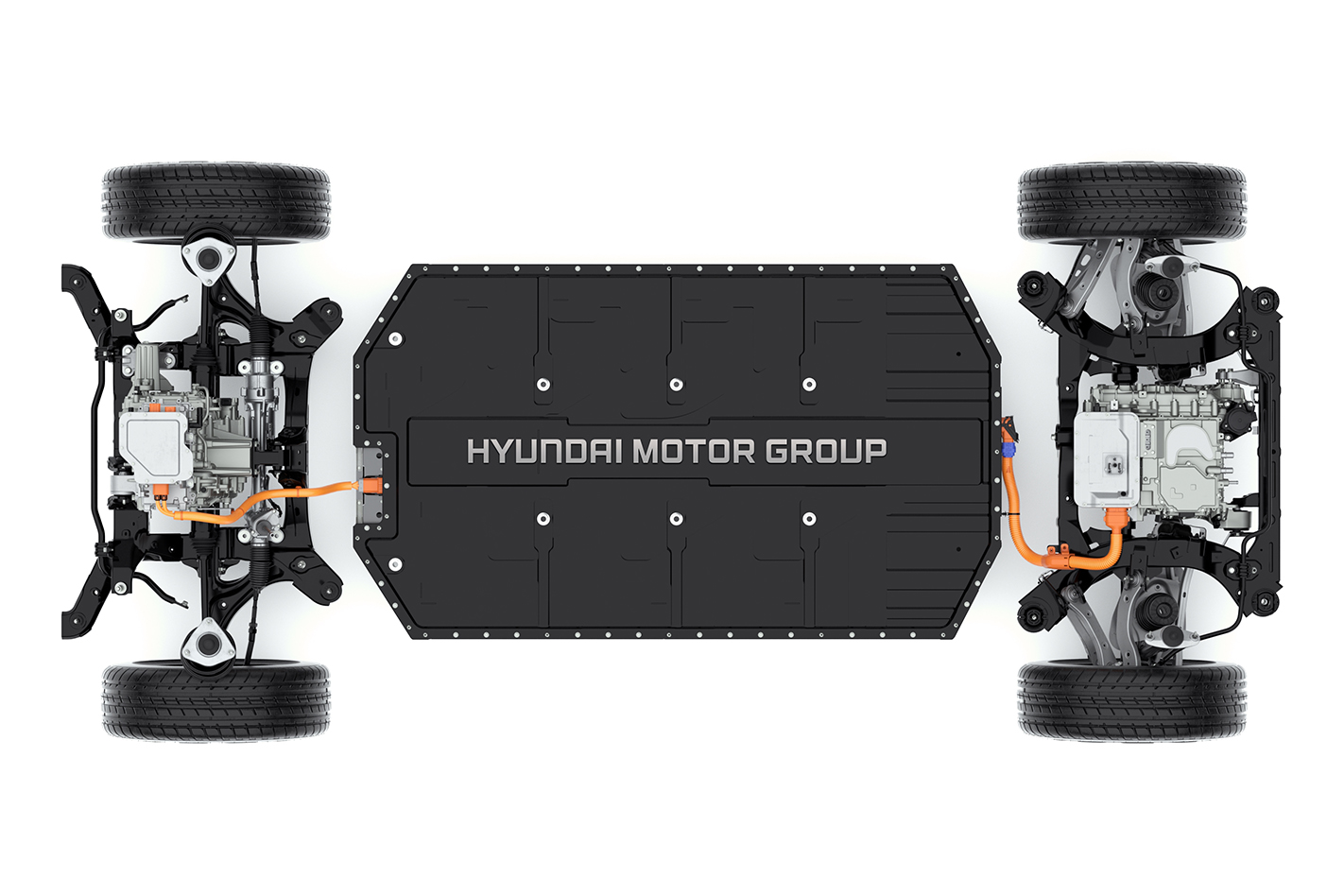
Hyundai’s battery design only allows cells to be arranged in a single layer, limiting the unit’s scalability and potential for significantly larger capacities. This design limitation most likely rules out the application of E-GMP in light commercial vehicles such as utes.
According to Biermann, Hyundai will concentrate on developing hydrogen fuel-cell technology for such vehicles.
Electrification System
The E-GMP’s compact electric (PE) system consists of a powerful motor, EV transmission and inverter integrated into a single compact module.
The high-speed motor is relatively small compared with other EV units but provides comparable performance, and brings efficiencies in both space maximisation and weight minimisation.
The standardised battery system can be tuned to offer performance appropriate for a specific vehicle segment, to maximise driving range, or produce more power for performance models.
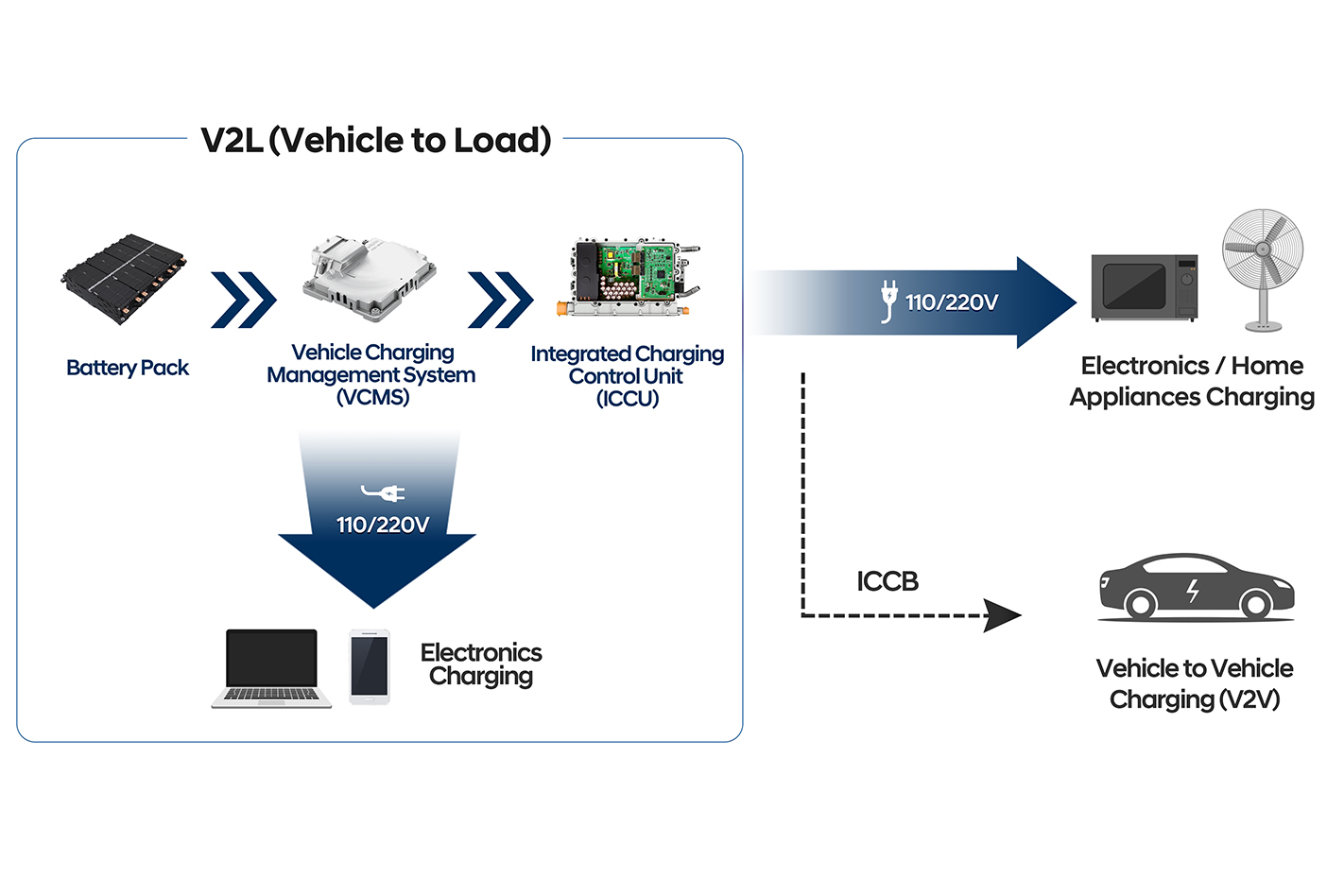
While most existing EVs and fast-charging infrastructure cater for 50kWh-150kWh charging and EVs equipped with a 400V system; BEVs built on the E-GMP will feature an 800V system, with up to 350kW ultra-rapid charging that allows for an 80 percent charge in 18 minutes or 100km every five minutes.
Porsche is the only other manufacture to yet reveal its use of 800v systems in its Taycan high-performance sedan, while Californian start up manufacturer Lucid uses 900-volt technology.
Hyundai’s solution will also feature bi-directional charging, as currently available on the Nissan Leaf, which allows for Vehicle to Load (V2L) and the option to power a home, return power to the electricity grid, or run appliances with up to 3.5kW of power – approximately the requirement for a mid-sized air conditioner unit and a 55-inch television for about 24 hours.
New bespoke BEV models
The E-GMP will underpin a total of 23 BEV models by 2025 across the Hyundai Group brands including its new Ioniq EV sub-brand, Genesis and Kia. These include the Ioniq 5 SUV, based on the Hyundai 45 concept (pictured), arriving next year.

Kia will also introduce a new pure electric crossover in 2021 as part of its ‘Plan S’ mid-to-long term strategy to take its share of EV sales volumes to 20 percent of overall sales by 2025, with seven all-new models due by 2027.
In the meantime, Hyundai and Kia will also continue to use its existing platforms for EV versions of ICE models, such as the Hyundai Kona Electric.


